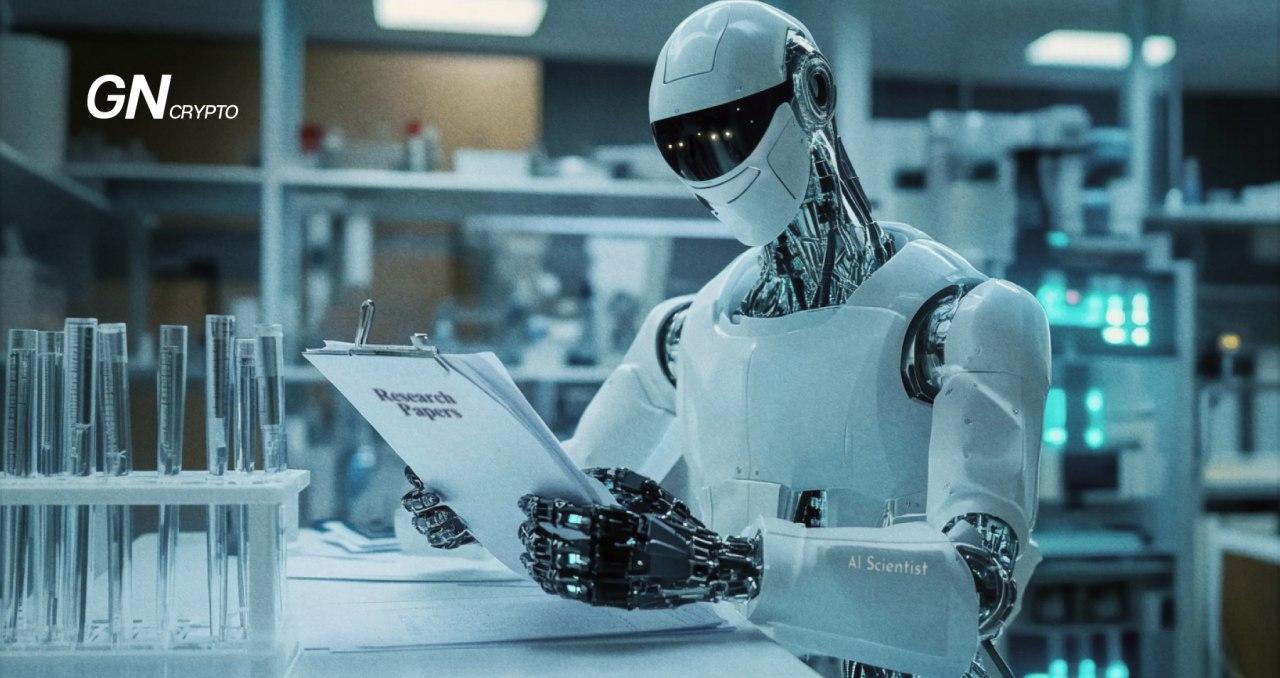AI Scientist Neural Network: Affordable Research at $15 per Paper

The startup Sakana AI, together with researchers from the University of British Columbia and Oxford, introduced AI Scientist to the professional community—a neural network that offers a complete, turnkey approach to conducting scientific research.
AI Scientist: The Inner Workings
The ability to carry out scientific research and discover new realms of knowledge is among the top priorities for artificial intelligence today. Guided by this belief, the team at Sakana AI initiated work on the world's first AI Scientist.
As described by the project, earlier innovative AI models had already been employed by scientists as auxiliary tools for researchers. However, their involvement was limited to specific stages of the scientific process (for instance, during brainstorming or coding). In contrast, AI Scientist is “a first comprehensive framework for fully automatic scientific discovery, enabling frontier large language models (LLMs) to perform research independently and communicate their findings”.AI Scientist has now acquired the same skills as a qualified “organic” scientist, specifically:
- Generating new scientific ideas;
- Coding;
- Running experiments;
- Visualizing the results;
- Structuring the conclusions;
- Drafting the work into a scientific publication;
- Reviewing the publication autonomously.
The startup decided to leverage AI Scientist’s abilities in several domains of machine learning. This requires a bit of a dive into the terminology. Simply put, machine learning—formerly referred to as “self-learning computers”—is the process of designing algorithms and models that teach computers to solve problems on their own.
AI Scientist took on the challenge of writing three scientific papers in the following domains:
- Diffusion modeling (a type of statistical model focused on data generation or synthesis; it is used, for example, in generating images from text descriptions);;
- Transformer-based language models (neural networks that grasp natural language by learning its context and meaning, and by observing relationships within sequences, like the words in a sentence);
- Dynamic learning (an approach where the model is trained either frequently or continuously).
The findings showed that
each idea is implemented and developed into a full paper at a meager cost of less than $15 per paper, illustrating the potential for our framework to democratize research and significantly accelerate scientific progress.
Additionally, the automated reviewer found that the scientific papers created by the neural network “exceed the acceptance threshold at a top machine learning conference”.
Upsides
The benefits of such a project are undeniable, and the researchers at Sakana AI are eager to emphasize them. They refer to AI Scientist as “the beginning of a new era in scientific discovery in machine learning,” (at the very least).
The concept truly appears both monumental and logical: an AI capable of studying and evolving will perform the research more rapidly and efficiently than any human laboratory. This edges us toward a world “where endless affordable creativity and innovation can be unleashed on the world’s most challenging problems,” Sakana AI concludes with a touch of grandeur.
To further emphasize their support for the scientific community and the altruistic nature of their goals, they released the AI Scientist code as open source.
It’s worth mentioning that, according to a recent World Economic Forum report, neural networks “focused” on scientific research have made it into the “Top 10 Emerging Technologies of 2024.”.
AI has the potential to transform every scientific discipline and many aspects of the way we conduct science,
notes the World Economic Forum.
…and the drawbacks
The most glaring downside of AI Scientist, as one might expect, is financial. The reality is that the neural network can produce comprehensive research for next to nothing, effectively devaluing the efforts of human scientists. How can traditional research secure significant funding when a bot is willing to do the work for only $15?
So, what exactly will human scientists do when effective and cheap AI scientists are around? This isn't just about Sakana AI; it's evident that other startups will catch on and expand the concept further. AI is unquestionably more powerful than humans at processing enormous amounts of data and identifying patterns. AI probably even beats humans in creativity—at least in generating research ideas faster than any human. It’s also possible that AI surpasses humans in creativity; at the very least, a bot can churn out possible research ideas far more quickly than any human can.
Meanwhile, AI Scientist lacks a solid understanding of ethics. The machine’s mind also doesn’t have the human intuition that has unquestionably influenced the course of scientific history. Humans may still hold the reins in deciding the direction of scientific inquiry or setting the strategic goals of research. The AI scientist, like a dutiful assistant, could then execute the visions of human scientists.
“The AI Scientist current capabilities, which will only improve, reinforces that the machine learning community needs to immediately prioritize learning how to align such systems to explore in a manner that is safe and consistent with our values,” urges Sakana AI.
Earlier, we highlighted the startup’’s promising work—relatively small AI models, whose architecture Sakana AI “modeled” after the social structures of fish and bees.
The content on The Coinomist is for informational purposes only and should not be interpreted as financial advice. While we strive to provide accurate and up-to-date information, we do not guarantee the accuracy, completeness, or reliability of any content. Neither we accept liability for any errors or omissions in the information provided or for any financial losses incurred as a result of relying on this information. Actions based on this content are at your own risk. Always do your own research and consult a professional. See our Terms, Privacy Policy, and Disclaimers for more details.

























